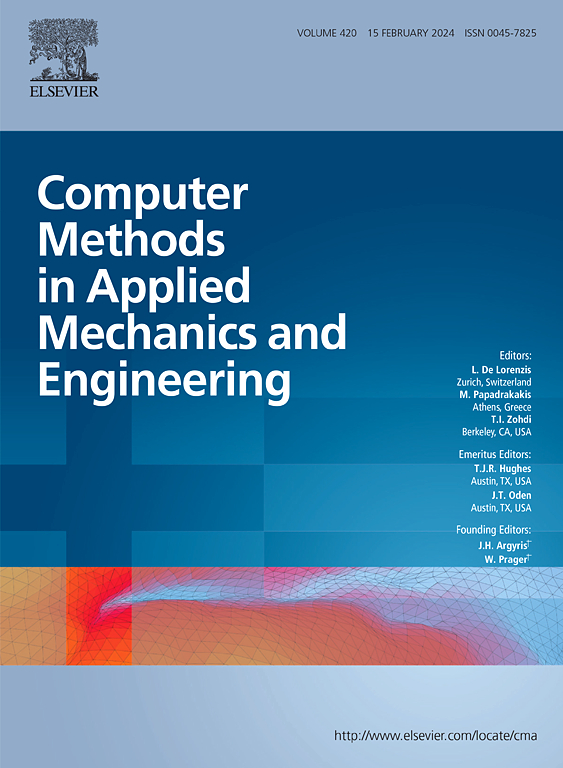Three dimensional isogeometric boundary element method for acoustic problems with viscothermal losses
IF 6.9
1区 工程技术
Q1 ENGINEERING, MULTIDISCIPLINARY
Computer Methods in Applied Mechanics and Engineering
Pub Date : 2025-02-21
DOI:10.1016/j.cma.2025.117843
引用次数: 0
Abstract
An isogeometric analysis is proposed for solving acoustic problems in fluids with significant thermal and viscous dissipation. The approach is based on the Kirchhoff decomposition, which simplifies the governing linearized conservation laws for mass, momentum, and energy by dividing the physical problem into three superimposed modal wave fields; acoustic, thermal, and viscous fields. The wave fields are coupled by boundary conditions and solved as time-harmonic Helmholtz problems using an isogeometric boundary element method.
The proposed solution benefits from isogeometric analysis in modeling exact geometries with high continuity, achieving accurate results while adopting moderate degrees of freedom. The basic idea of isogeometric analysis is to use the same spline basis functions to approximate both the geometry and the physical variables, allowing for a direct connection between computer-aided design tools and analysis models. Moreover, the solution profits from the boundary element approach not requiring volumetric domain discretization or far-field truncation.
3D exterior and interior test cases are discussed to validate the proposed method. The results are verified by an analytical solution and other competing numerical methods showing significant savings in degrees of freedom. Furthermore, an interior field analysis reveals the dissipative behavior inside thin boundary layers at the fluid–structure interface. A comparison with the lossless case emphasizes the added value of accounting for viscothermal losses, which were previously neglected in isogeometric analysis of acoustic problems. Despite the ill-conditioning of the system combining the acoustic, thermal, and viscous contributions, the problem can be solved via LU decomposition with iterative refinement.
求助全文
约1分钟内获得全文
求助全文
来源期刊
CiteScore
12.70
自引率
15.30%
发文量
719
审稿时长
44 days
期刊介绍:
Computer Methods in Applied Mechanics and Engineering stands as a cornerstone in the realm of computational science and engineering. With a history spanning over five decades, the journal has been a key platform for disseminating papers on advanced mathematical modeling and numerical solutions. Interdisciplinary in nature, these contributions encompass mechanics, mathematics, computer science, and various scientific disciplines. The journal welcomes a broad range of computational methods addressing the simulation, analysis, and design of complex physical problems, making it a vital resource for researchers in the field.

 求助内容:
求助内容: 应助结果提醒方式:
应助结果提醒方式:


